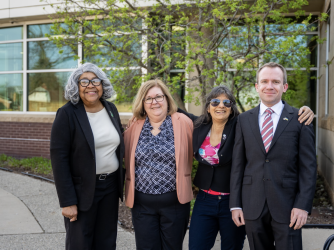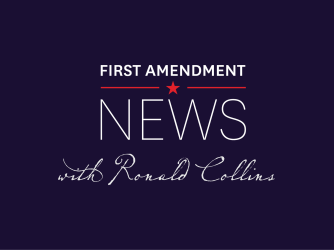Table of Contents
Legal Scholarship Covers 'How Not to Criminalize Cyberbullying'
Today, there is no hotter topic in the free speech arena than "cyberbullying" laws. University of Florida College of Law Professor Lyrissa Lidsky and student Andrea Pinzon Garcia have posted an excellent survey of cyberbullying laws and their relationship with the First Amendment, framed around Missouri's cyberbullying statute, in How Not to Criminalize Cyberbullying, ___ Mo. L. Rev. ___ (forthcoming 2012).
Lidksy and Garcia note that cyberbullying statutes stand on firmest constitutional ground when limited to the traditional classes of speech outside of First Amendment protection: true threats, obscenity, defamation, fighting words, and so forth. When moving beyond these well-established categories, state cyberbullying statutes risk unconstitutionality. So what do the authors state that a state legislature can do to make sure its law passes First Amendment muster?
First, for speech to be criminalized, it should have to be repeated "so often that it creates a substantial disruption to the lives of the victims." Here the authors specifically cite Saxe v. State College Area School District, 240 F.3d 200 (3d Cir. 2001) (striking down a public school district's overbroad harassment policy), but the language the authors suggest tracks the Supreme Court decisions in both Tinker v. Des Moines Indep. Comm. Sch. Dist., 393 U.S. 503 (1969) ("substantial disruption") and Davis v. Monroe Cty. Bd. of Educ., 529 U.S. 629 (1999) ("severe, pervasive, and objectively offensive" with "pervasive" effectively meaning multiple iterations of speech).
Second, criminalization should target cyberbullying involving children. As FIRE has noted in other contexts, there is a legal "bright line" between child and adult, between high school and college. The Supreme Court has found First Amendment carve-outs in various areas where children are involved, such as child pornography (New York v. Ferber, 458 U.S. 747 (1982)) and free expression in K-12 public schools (Hazelwood Sch. Dist. v. Kuhlmeier, 484 U.S. 260 (1988)). Whether this heightens the governmental interest in play or changes the First Amendment analysis remains to be seen, but prohibitions on cyberbullying are on firmer ground when dealing with children rather than adults, such as college students.
Third and fourth, efforts to criminalize cyberbullying might work in certain places and contexts (such as primary schools or on school assignments) but not in others (in a public square or related to issues of public concern). FIRE has addressed some of the jurisdictional questions regarding cyberbullying before.
As Lidsky and Garcia note, cyberbullying is "a social problem encompass[ing] a broad swath of behavior and speech.... Not all of [its] problems can or should be addressed by criminalization." This is exactly right. Social ills involving speech are usually best regulated by social pressure and more speech-not by misguided and overbroad top-down policies.
Recent Articles
FIRE’s award-winning Newsdesk covers the free speech news you need to stay informed.

VICTORY: Michigan town declares Sept. 6 ‘First Amendment Day’ after FIRE sues its mayor for shouting down residents

USC canceling valedictorian’s commencement speech looks like calculated censorship

Back into the FIRE: Hasen’s response to FIRE and Rohde: Don’t read the press clause out of the Constitution — First Amendment News 420
